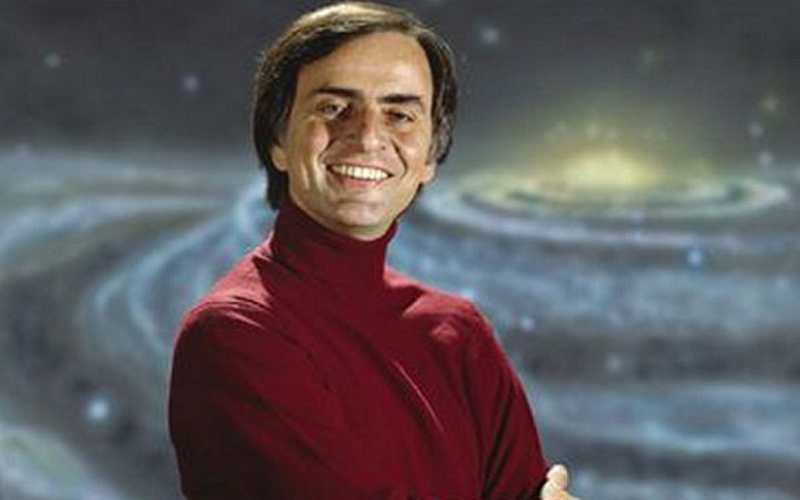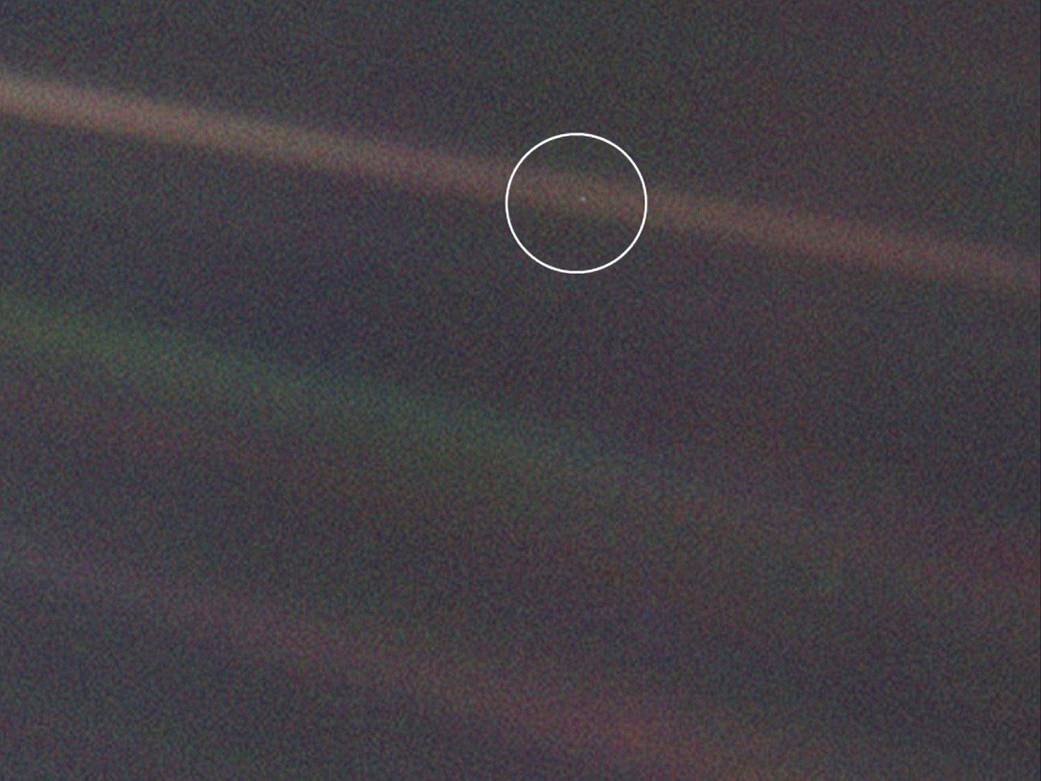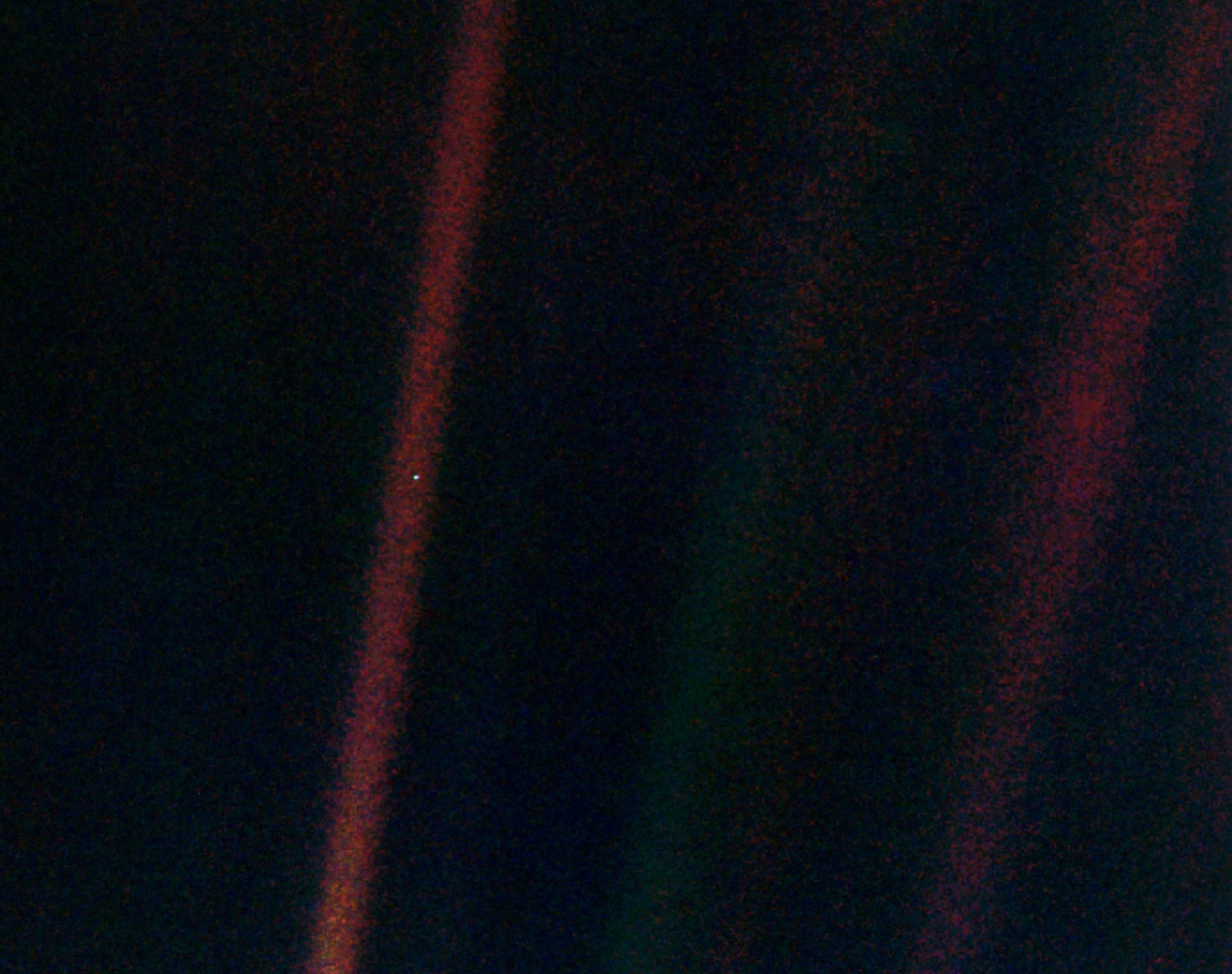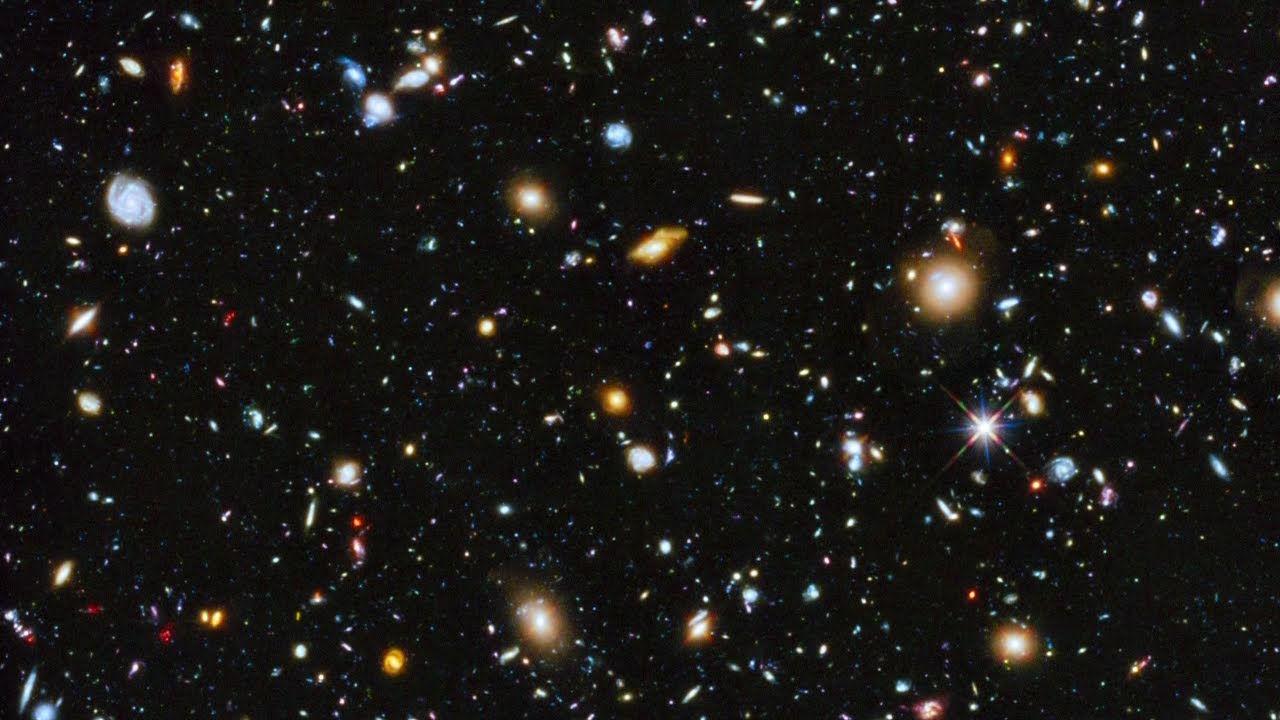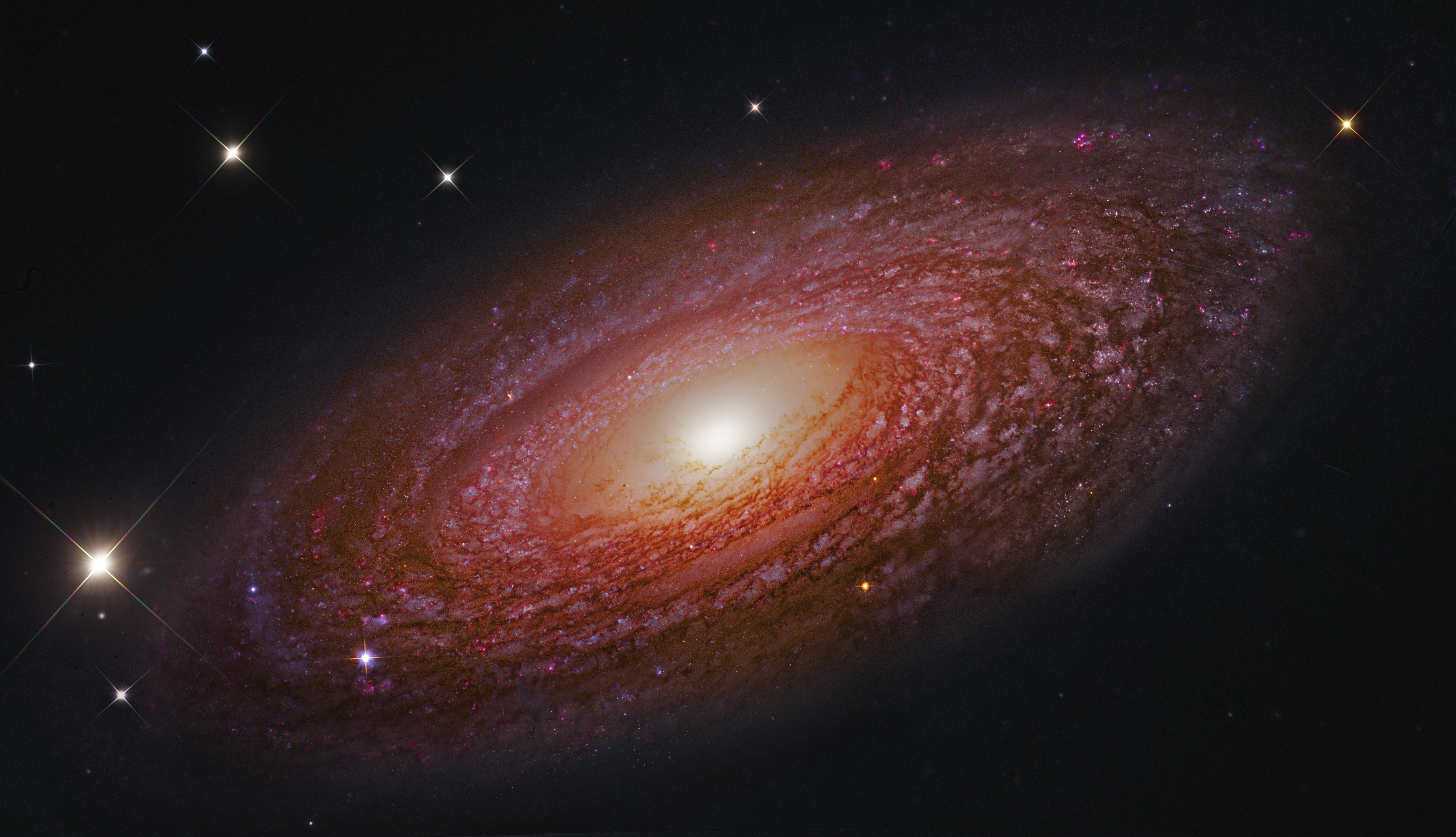|
home | what's new | other sites | contact | about |
|||
|
Word Gems exploring self-realization, sacred personhood, and full humanity
Carl Sagan: What science should be teaching us about the mystery and marvel of God: "How is it that hardly any major religion has looked at science and concluded, 'This is better than we thought! The Universe is much bigger than our prophets said, grander, more subtle, more elegant?' Instead they say, 'No, no! My god is a little god, and I want him to stay that way'."
return to the main-page article on "God"
Dr. Carl Sagan (1934 - 1996)
On the home-page, near the bottom, you will find a tribute to Dr. Carl Sagan's inspiring and insightful work, "The Pale Blue Dot." If you've not seen it, allow me to reproduce it here as prelude to the discussion at hand.
Viewing the Earth as single pixel of light should naturally elicit from us awe and wonder but also humility and even reverence. Most people might identify with these sentiments. But this is not the case with those we expect to be the first to offer a certain deference. Carl Sagan poses a question that should be answered:
no, no, my god is a little god, and I want him to stay that way “Before we invented civilization our ancestors lived mainly in the open out under the sky... Even today the most jaded city dweller can be unexpectedly moved upon encountering a clear night sky studded with thousands of twinkling stars. When it happens to me after all these years it still takes my breath away... “How is it that hardly any major religion has looked at science and concluded, 'This is better than we thought! The Universe is much bigger than our prophets said, grander, more subtle, more elegant?' Instead they say, 'No, no! My god is a little god, and I want him to stay that way.' A religion, old or new, that stressed the magnificence of the Universe as revealed by modern science might be able to draw forth reserves of reverence and awe hardly tapped by the conventional faiths.” Dr. Carl Sagan, Pale Blue Dot: A Vision of the Human Future in Space What a great observation from Dr. Sagan. And what a supreme anomaly. How natural it is to be filled with sublime enthrallment when gazing up at the Milky Way. And when we do, it is also very natural to imagine that the God who made all this possible will be equal to, or, rather, supersede, the wonders we behold. But this is not the image of God presented by the Churchmen. Will Durant does an excellent job of characterizing the "small god" created for us by Orthodoxy. I have written at length on the subject of the dark spirits in the Church who make merchandize of the fearful. “What do we really want from religion? Palliatives? Therapy? Comfort? Do we want reassuring fables or an understanding of our actual circumstances? Dismay that the Universe does not conform to our preferences seems childish. You might think that grown-ups would be ashamed to put such thoughts into print. The fashionable way of doing this is not to blame the Universe -- which seems truly pointless -- but rather to blame the means by which we know the Universe, namely science.”
images of the universe might make believers of us all, except...
The “Hubble Deep Field” photo becomes a peering of 12 billion light-years into the primordial past. Nearly all 3000 objects in this image are galaxies, clusters of billions of stars. These cosmic lighthouses present themselves to the eye as close neighbors, but this seeming proximity, due to enormous viewing-distance, is only apparent, not real, with actual separation, typically, measured in millions of light-years. Editor's note: For some time I've been aware of physicists’ estimate of the universe’s 200 billion galaxies, each with an average of 100 to 200 billion stars (our own Milky Way, it seems, has 400 billion stars). This strikes us as overwhelming enough, but recently I’ve learned that, in addition to these “full-bodied” galaxies, there are “dwarf galaxies” with a hardly-worth mentioning star-population of only a few billion. And there are trillions of these “dwarf galaxies”! trillions! - not just trillions of stars, but trillions of galaxies, each comprised of billions of stars!
Just today as I offer this supplemental “editor’s note,” a news headline arrests my attention: “Ex-Pentagon UFO Chief: We May Not Be Alone.” The article offers assessment of witnessed spacecraft maneuvering in ways and at speeds currently outside the parameters of known science. All of which begs the question: among the trillions and trillions of stars out there, how many serve as sentinel to home-planets of intelligent life? - advanced civilizations, many of which, quite likely, with a sophistication superseding that of our own. The afterlife reports often speak of a universe filled with life and intelligence. Images of the universe might make believers of us all; except, it seems, the Churchmen.
“A religion, old or new, that stressed the magnificence of the Universe as revealed by modern science might be able to draw forth reserves of reverence and awe hardly tapped by the conventional faiths.” Dr. Carl Sagan
Spiral galaxy NGC 2841 resides a mere pebble’s toss from the Earth, 46 million light-years. It’s larger than our own galaxy with a diameter of 150,000 light-years (versus 100,000 for the Milky Way). In “The Wedding Song” we find Elenchus revealing that he’s arranged for a star to be named for the girl he loves. On the certificate he's left a message: “Dear Kairissi, it may be a long time before I can give this to you. I was not able to give you anything when we were young. Now it’s my wish to give you all things – one star at a time. Elenchus.” Is this not why God created the stars?
the splendiferous creation, if we allow it to speak, will lead us to true images of God I will say no more about this, as you will discern on your own; and Dr. Sagan has done a good job of plainly stating the issue. Here are a few more quotations from his book: “Take a good long look at it. Stare at the dot for any length of time and then try to convince yourself that God created the whole Universe for one of the 10 million or so species of life that inhabit that speck of dust. Now take it a step further: Imagine that everything was made just for a single shade of that species, or gender, or ethnic or religious subdivision. If this doesn’t strike you as unlikely, pick another dot. Imagine it to be inhabited by a different form of intelligent life. They, too, cherish the notion of a God who has created everything for their benefit. How seriously do you take their claim?” “A religion, old or new, that stressed the magnificence of the Universe as revealed by modern science might be able to draw forth reserves of reverence and awe hardly tapped by the conventional faiths.” “The significance of our lives and our fragile planet is then determined only by our own wisdom and courage. We are the custodians of life's meaning. We long for a Parent to care for us, to forgive us our errors, to save us from our childish mistakes. But knowledge is preferable to ignorance. Better by far to embrace the hard truth than a reassuring fable. If we crave some cosmic purpose, then let us find ourselves a worthy goal.” “There is something stunningly narrow about how the Anthropic Principle is phrased. Yes, only certain laws and constants of nature are consistent with our kind of life. But essentially the same laws and constants are required to make a rock. So why not talk about a Universe designed so rocks could one day come to be, and strong and weak Lithic Principles? If stones could philosophize, I imagine Lithic Principles would be at the intellectual frontiers.” Genesis says that God intentionally left the Universe unfinished that we might participate with God in competing it “Or consider a story in the Jewish Talmud left out of the Book of Genesis. (It is in doubtful accord with the account of the apple, the Tree of Knowledge, the Fall, and the expulsion from Eden.) In The Garden, God tells Eve and Adam that He has intentionally left the Universe unfinished. It is the responsibility of humans, over countless generations, to participate with God in a 'glorious' experiment - the 'completing of the Creation.' The burden of such a responsibility is heavy, especially on so weak and imperfect a species as ours, one with so unhappy a history. Nothing remotely like 'completion' can be attempted without vastly more knowledge than we have today. But, perhaps, if our very existence is at stake, we will find ourselves able to rise to this supreme challenge.”
Editor's note: Another very important insight by Dr. Sagan. If ancient literature, along with the Bible, teaches that we are to complete God's creation ("dress and keep"), then why is there not more emphasis on this by the Churchmen? Why so much effort to create a "small god"? - along with anti-humanistic, "counter-Renaissance" doctrines? Well, I think we know. Only a knowledgeable and competent person could "complete the creation," but the purpose of the Church is to create dependent, servile, cultishly-minded followers in order to promote an atmosphere of power-and-control. “If we continue to accumulate only power and not wisdom, we will surely destroy ourselves. Our very existence in that distant time requires that we will have changed our institutions and ourselves. How can I dare to guess about humans in the far future? It is, I think, only a matter of natural selection. If we become even slightly more violent, shortsighted, ignorant, and selfish than we are now, almost certainly we will have no future.” self-congratulatory chauvinisms: but there is one area where we do so very well “In the littered field of discredited self-congratulatory chauvinisms, there is only one that seems to hold up, one sense in which we are special: Due to our own actions or inactions, and the misuse of our technology, we live at an extraordinary moment, for the Earth at least—the first time that a species has become able to wipe itself out.” Carl Sagan, Pale Blue Dot: A Vision of the Human Future in Space
|
|||
|
|
